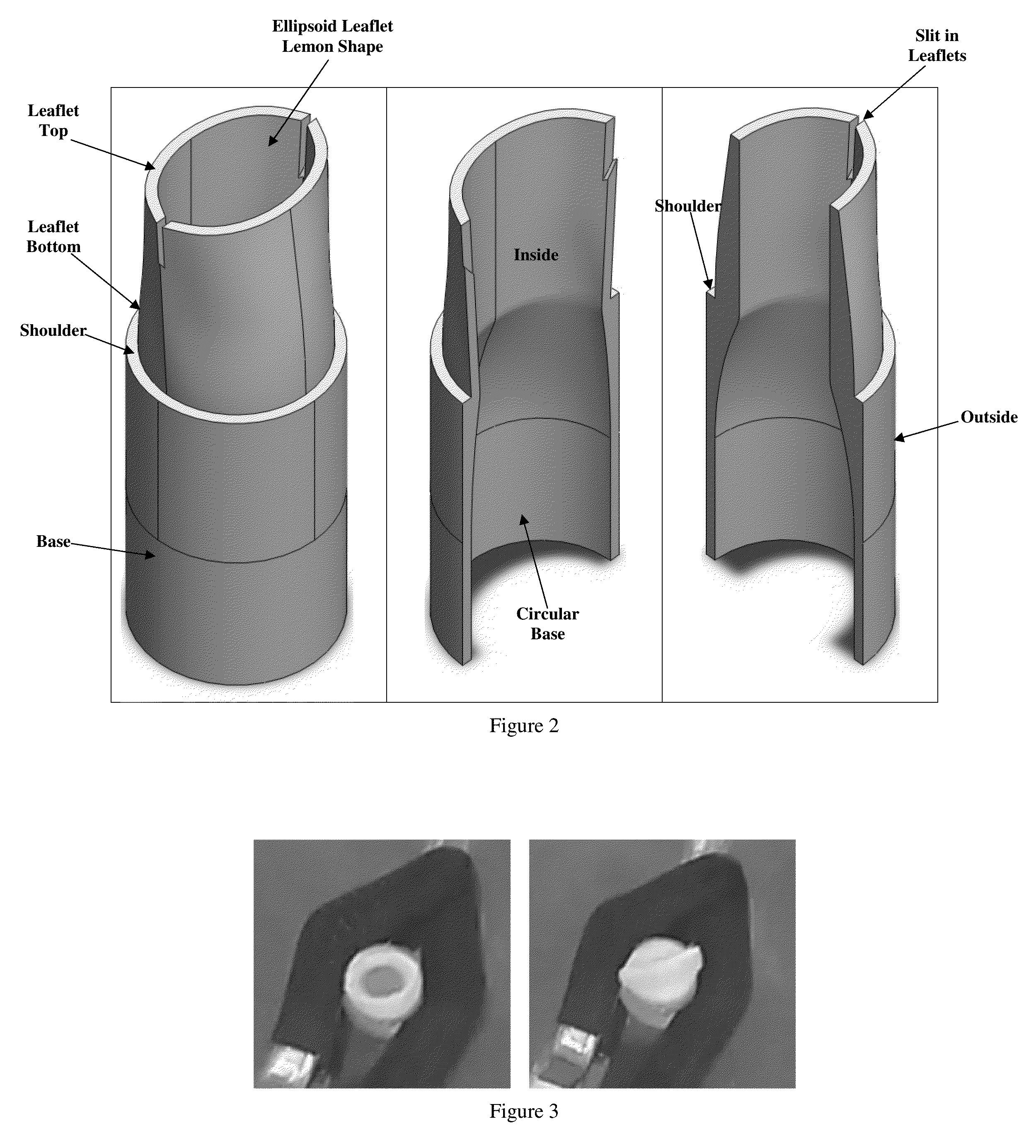Implantable Open Vein Valve
a valve and open vein technology, applied in the field of valve apparatus, can solve the problems of inadequate valve development, inability to reduce reflux, and inability to achieve the effect of reducing reflux
- Summary
- Abstract
- Description
- Claims
- Application Information
AI Technical Summary
Benefits of technology
Problems solved by technology
Method used
Image
Examples
example 1
Design Specifications
Competency
[0064]The primary function of a prosthetic venous valve is to reduce retrograde flow. Greater reflux flow rates have been correlated with increases in symptom severity [19, 67]. Neglén measured the time average reflux flow rate for incompetent CFV (n=47), femoral (n=87), and popliteal (n=103) deep veins to be 3-3357 mL / min [19]. A competent prosthetic venous valve should have a time average reflux flow rate below 3 mL / min to ensure reflux is reduced below pathologic levels.
[0065]A valve must remain competent under all of the potential retrograde pressures it may encounter in a vein when an individual is standing. Retrograde pressure in veins is caused primarily by the hydrostatic pressure from the column of blood above it which can range from 30 to 100 mmHg [2, 68-69]. The Valsalva maneuver can increase backpressure up to an additional 30 mmHg [70]. Thus a venous valve could experience retrograde pressures ranging from 30 to 130 mmHg. Applying a safety...
example 2
Valve Design and Fabrication
[0083]Prosthetic venous valves are typically mechanical, bioprosthetic, or polymer valves. A polymer valve is desirable because a mechanical valve may not be able to function in a distensible vein, and a bioprosthetic valve would be difficult to manufacture in large quantities.
[0084]Poly(vinyl-alcohol) cryogel (PVA) was chosen as one of the polymeric materials used for the prosthetic venous valve of the invention. PVA is a relatively new and promising biomaterial developed by researchers [91-92]. PVA is prepared by combining Poly(vinyl-alcohol) pellets with water to obtain a desired wt %, heating in an autoclave at 120° C. until the pellets have dissolved. At this point the PVA is in a viscous state and can be used to coat solid objects, such as stents, or be injected molded and assume the shape of a desired geometry [62, 66, 93]. The liquid PVA is then solidified by cross-linking which occurs during freeze-thaw cycling.
[0085]PVA meets t...
example 3
Finite Element Model
[0105]A finite element model was created to obtain the geometry of the invention valve after being expanded by a stent into a 10 mm vein. The deformed geometry was then used in the computational fluid dynamics simulation.
Material Properties
[0106]As the strain in a PVA valve during its expansion by a stent is expected to be small, the material of the valve in this model is linearly elastic and isotropic. The Young's modulus of the PVA can be estimated from its manufacturing conditions. Fromageau reported that 10 wt % PVA undergoing four freeze-thaw cycles with slow temperature transitions had a mean Young's modulus of 286 kPa [99]. Weaver reported that increasing from a 10 to 20 wt % solution can increase the Young's modulus by 250%, suggesting that the stiffness of the PVA used in this application to be approximately 1000 kPa [97]. PVA is nearly incompressible, having a Poisson's ratio between 0.42 and 0.499 [98-99]. The Poisson's ratio used...
PUM
 Login to View More
Login to View More Abstract
Description
Claims
Application Information
 Login to View More
Login to View More - R&D
- Intellectual Property
- Life Sciences
- Materials
- Tech Scout
- Unparalleled Data Quality
- Higher Quality Content
- 60% Fewer Hallucinations
Browse by: Latest US Patents, China's latest patents, Technical Efficacy Thesaurus, Application Domain, Technology Topic, Popular Technical Reports.
© 2025 PatSnap. All rights reserved.Legal|Privacy policy|Modern Slavery Act Transparency Statement|Sitemap|About US| Contact US: help@patsnap.com



